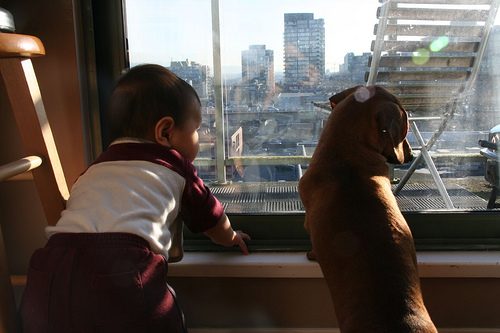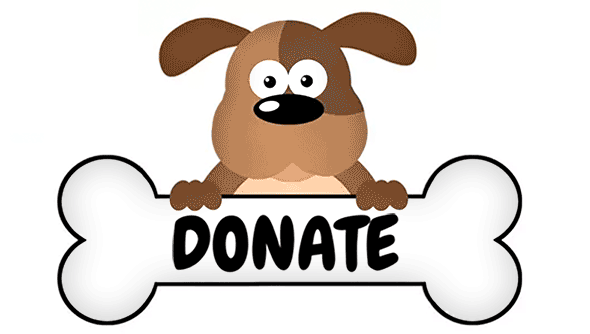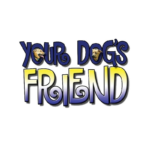
Photo by gizzypooh on Flickr
Preparing Your Dog for a New Baby
So you’re having a baby. Congratulations! This is an exciting time in your household, and everyone is looking forward to the new arrival with great anticipation. Everyone, that is, except maybe the furry four-legged member of the family, who may have been occupying the special spot that will soon be filled by that squirmy, noisy, smelly new thing. With a little forethought and planning, though, the addition of your new baby doesn’t have to be traumatic for your dog … or you. Here are some guidelines to help make the transition a smooth one.
Before Baby Arrives
Begin preparing your dog before the baby arrives. Things will undoubtedly be very hectic (and maybe stressful) once the baby comes home, so it’s best to work with your dog on accepting the changes in his home environment when you have time to concentrate on him.
Brush up on obedience. The first step it so make sure your dog knows his manners and has self-control. Review his basic obedience skills. If you and your dog haven’t taken a positive training class or worked with a positive trainer, NOW is the time. Give yourself and your dog as much time as possible to learn the cues and behaviors that will be so very important once the baby arrives.
- Practice giving cues comfortably in any position. Try sitting back on a couch, lying in bed, or sitting on the floor. Remember: Giving visual or hand cues may be a little tricky when you’re holding a squirming infant in your arms. If your dog doesn’t respond to familiar cues like “sit” or “down” when you’re in a position other than standing in front of him, it could be that it’s not the verbal cue that he’s responding to, but rather some subtle body movement that you’re not even aware of. Take the time necessary to make sure he responds to the verbal cue, no matter where it comes from.
- Work on leash walking skills, especially “heel”, for when you walk your dog and baby together. Handling the stroller and your dog on leash may be more complicated that you expect. Trying it ahead of time will help you see what you and your dog still need to learn. Put a heavy doll or bag of flour in the stroller to feel the extra weight more accurately.
- Spend extra time on skills like “leave it” and “drop it” for those times when the baby’s dolls, blankets, diapers, etc. drop on the floor.
- If you can, get a baby doll and pretend to change her diapers and feed her while your dog is in the room. As you do this, toss your dog treats for no reason. Move the doll around to different rooms. Then, add cues, like “go to mat”, while you pretend to change the diaper. Make sure your dog knows this cue well before trying it around such a distraction.
- Check that everyone in your household uses the same cues for the same behaviors. Things will be confusing enough for your dog without having the humans in his life adding to the confusion.
- Ignore attention-seeking behavior, so your dog doesn’t get in the habit of pawing, scratching, or barking at you to get attention. Give your dog attention when he doesn’t “demand” it. Teach your dog “wait”, and reward him when he does.
- Begin now to get your dog used to changes in his routine by introducing a “baby schedule.” Vary his feeding times. Put his bed where you will want it when the baby arrives. Start using baby gates, a crate, or ex-pen randomly to block him in and out of rooms. Change his walking and exercise patterns so that he doesn’t expect the same routine each day. Dogs are creatures of habit; help your dog learn to be flexible.
- Teach your dog that good things happen when people approach his food bowl and that it’s fun giving people his toys because he gets treats and gets the toy back. Train him to love being touched and handled all over, including his paws, ears, and tail.
Get your dog used to baby sounds, smells, equipment, and help him make a good association with your friend’s real babies. This is especially important if your dog hasn’t been socialized around babies. Many dogs don’t see babies as human. Babies are small, wiggly, smell funny, and make noises like small animals.
Baby sounds, smells, and equipment are new, and perhaps scary, for your dog. So, start early and acclimate him gradually. Give your dog lots of small treats whenever you expose him to anything related to babies.
- Encourage friends with babies to come over, and let your dog see you holding their baby.
- Get your dog used to baby sounds by playing recordings of babies. You can buy a CD of baby sounds at www.legacycanine.com. Start at a low volume, while giving your dog lots of small, yummy treats. You can gradually increase the volume according to your dog’s comfort level.
- Take the time to gradually introduce your dog to your baby equipment. Put your doll (or a stuffed animal) in the baby carrier and stroller and walk outside while holding the leash. Practice moving the car seat and your dog in and out of the car. Some dogs will fear while others will chase anything that swings, rocks, or moves.
- If you haven’t been using baby gates at home, start putting some up and moving them around. Give your dog a favorite toy, stuffed Kong, or other treat when the gates are up.
- Get the baby’s room ready early, so your dog can adjust to the new items there, including the new furniture. Find a safe place for the diaper pail. If you are going to have a basinet in your bedroom, move it in ahead of time. If your dog sleeps on the floor, he will need to get used to this “thing” in his space.
- Familiarize your dog with the smell of baby lotion, baby powder, and other products you plan to use.
- Start paying less attention to your dog before the expected “Big Day.” Continue his exercise and fun training games throughout the day, but you don’t want him to associate a big decline in attention with the new baby.
- Make sure your dog is familiar and comfortable with everyone that may care for him. If you’re just too busy to provide him with daily exercise, hire a dog walker. The more steam your dog can blow off through physical and mental exercise, the better behaved he’ll be.
- If your dog is due for a check-up or vaccinations, schedule your visit well before the baby is due, and be sure to have all needed medications and supplies on hand.
Once The Baby Is Here
- Bring home a receiving blanket with the baby’s scent. Let your dog become accustomed to this new smell in positive ways by giving him lots of treats as he’s exploring.
- When you get home, greet your dog alone first. Then, calmly introduce your dog to your baby, and reward him for appropriate behavior.
- When your dog behaves inappropriately, ask him to do something else instead. Repeating “no” won’t help him learn what you want. Your dog may even associate the baby with your constant corrections.
- Be careful not to ignore your dog when the baby is around and then lavish attention on him at other times. It could seem that your baby is making good things stop.
- Use a baby gate, rather than a closed door, when you need to keep your dog out of your baby’s room. Generally, though, let your dog spend time with you and your baby. Keep a bowl of treats nearby and toss him treats in your baby’s presence.
- Some dogs will be overstimulated by baby swings and bouncy seats. So, it’s safest to put up a baby gate to keep your dog out of the room when using these items.
- Make sure your dog has a safe and secure place he can go when he needs to be away from the baby. A crate or baby-gated area are both good options. It’s best if “his place” is an area where he likes spending time; don’t isolate him in the basement. As your baby starts crawling and then walking, teach your toddler to avoid your dog’s “place”.
- Most importantly, no matter how petite or perfect your dog is, never leave him alone with an infant or small child. In fact, things can go terribly wrong even when you’re in the same room. It’s your responsibility to recognize the signs and know when your dog needs a rest and your toddler needs more guidance.
With proper planning and preparation, most dogs will be curious about the new arrival, but everyone will be safe.
Resources
There are articles and resources for expectant parents and parents of babies and toddlers at www.FamilyPaws.com, home to both Dogs & Storks and Dog & Baby Connection. Family Paws also runs a Dog and Baby Support hotline at 1-877-247-3407.
Also look at our handout on Children & Dogs.
Key Points to Remember
- Take plenty of time to prepare your dog before the baby arrives.
- Brush up on training cues, especially walking on leash, leave it, drop it, wait, go to mat, and crate training. Help your dog learn verbal cues while you’re leaning back on a couch, sitting on the floor, or lying in bed.
- Start varying your dog’s schedule.
- Gradually familiarize your dog with the new sounds, smells, and equipment that will come with the baby.
- Practice walking your dog along with the stroller and the baby carrier.
- Let your dog see you holding friends’ babies.
- Ask a relative or friend to bring home a receiving blanket with your baby’s scent before the baby comes home.
- Help your dog feel positive about the baby. Toss your dog treats in your baby’s presence.
Still Need Help?
Contact Your Dog’s Friend at [email protected] or (301)983-5913 for advice and referrals or check out our list of recommended trainers and behaviorists.
Your Dog’s Friend is a nonprofit 501(c)(3) organization working to improve dogs’ lives, reduce problem behaviors, and keep dogs out of shelters, by educating and supporting their humans.
This material is not intended to be a substitute for professional help when dealing with dogs with intense or potentially dangerous behavior issues. Consult a positive reinforcement trainer or veterinary behaviorist for professional assessment, guidance, and support.




